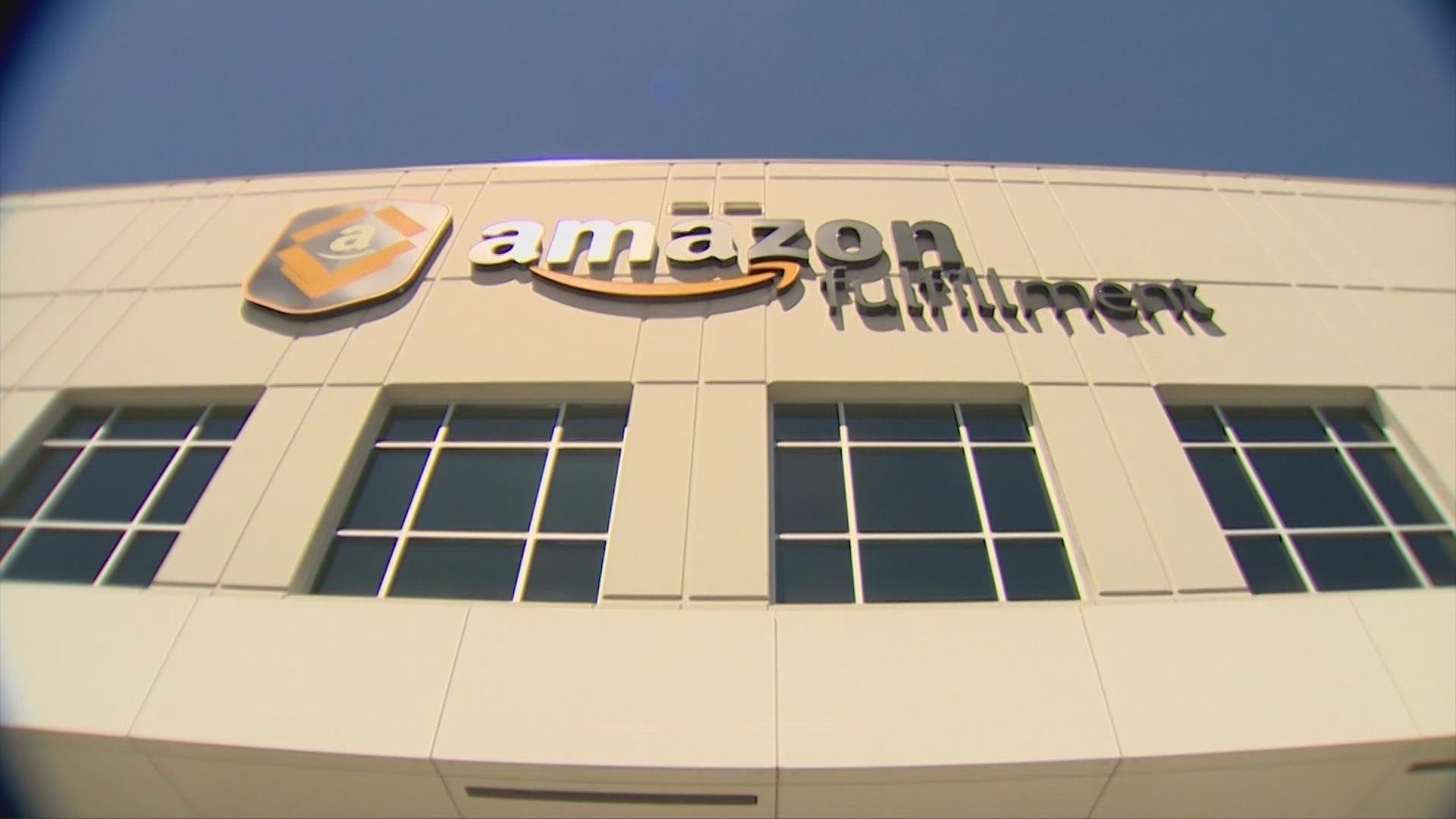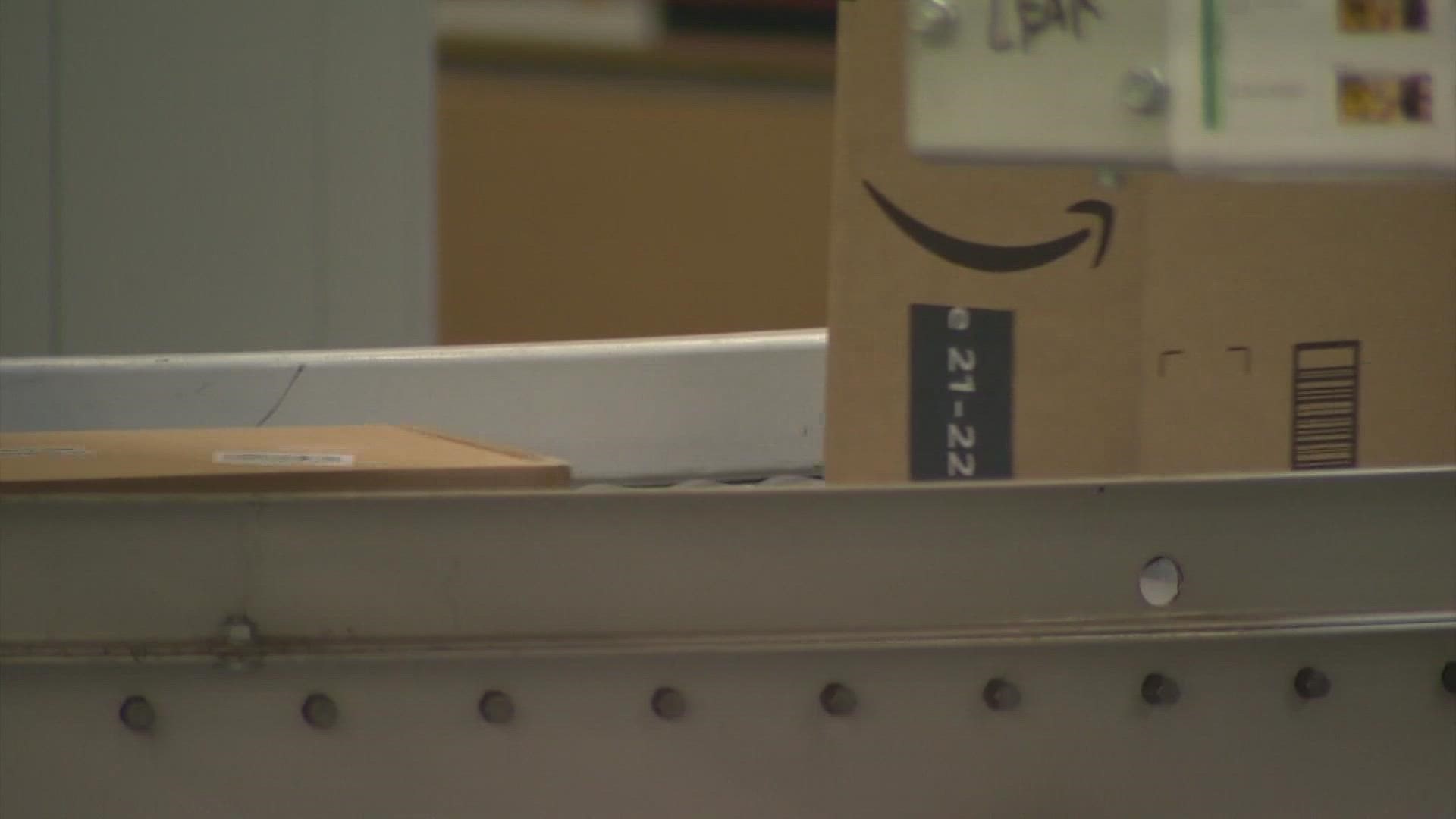NEW YORK — Amazon workers in Staten Island, New York, voted to unionize on Friday, marking the first successful U.S. organizing effort in the retail giant’s history and handing an unexpected win to a nascent group that fueled the union drive.
Warehouse workers cast 2,654 votes in favor of a union, giving the fledgling Amazon Labor Union (ALU) enough support to pull off a victory. According to the National Labor Relations Board, which is overseeing the process, 2,131 workers rejected the union bid.
The 67 ballots that were challenged by either Amazon or the ALU were not enough to sway the outcome. About 57% of the more than 8,300 workers on the voter list cast their ballots.
Federal labor officials said the results of the count won’t be verified until they process any objections that both parties may file. Any objections are due by April 8.
"The Labor Movement congratulates the workers in Staten Island for winning the first union at Amazon,” MLK Labor Executive Secretary-Treasurer Katie Garrow said in a statement. “This is a historic moment in time and has the power to shape America’s future.”
The victory was an uphill battle for the independent group, made up of former and current workers who lacked official backing from an established union and were out-gunned by the deep-pocketed retail giant. Despite obstacles, organizers believed their grassroots approach was more relatable to workers and could help them overcome where established unions have failed in the past.
"We’re disappointed with the outcome of the election in Staten Island because we believe having a direct relationship with the company is best for our employees," Amazon said in a statement. "We’re evaluating our options, including filing objections based on the inappropriate and undue influence by the NLRB that we and others (including the National Retail Federation and U.S. Chamber of Commerce) witnessed in this election."
Tristan Dutchin, who began working for the online retailer about a year ago, is hopeful that the new union will improve working conditions at his workplace.
“I’m excited that we’re making history,” Dutchin said. “We’re about to unionize a multibillion, trillion-dollar company. This will be a fantastic time for workers to be surrounded in a better, safer working environment.”
Chris Smalls, a fired Amazon employee who has been leading the ALU in its fight on Staten Island, bounded out the NLRB building in Brooklyn on Friday with other union organizers, pumping their fists and jumping, chanting “ALU.” They uncorked a bottle of Champagne.
Meanwhile, Amazon workers in Bessemer, Alabama, appear to have rejected a union bid but outstanding challenged ballots could change the outcome. The votes were 993-to-875 against the union. A hearing to review 416 challenged ballots is expected to begin in the next few days.
The union campaigns come at a time of widespread labor unrest at many corporations. Workers at more than 140 Starbucks locations around the country, for instance, have requested union elections and several of them have already been successful.
John Logan, director of labor and employment studies at San Francisco State University, said the early vote counts in New York have been “shocking.” The nascent Amazon Labor Union, which is leading the charge on Staten Island, has no backing from an established union and is powered by former and current warehouse workers.
“I don’t think that many people thought that the Amazon Labor Union had much of a chance of winning at all,” Logan said. “And I think we’re likely to see more of those (approaches) going forward.”
After a crushing defeat last year in Bessemer, when a majority of workers voted against forming a union, the Retail, Wholesale and Department Store Union got a second chance to organize another campaign when the NLRB ordered a do-over after determining that Amazon tainted the first election.
Though RWDSU is currently lagging in the latest election, Logan said the early results were still remarkable because the union has made a good effort narrowing its margin from last year.
Amazon has pushed back hard in the lead-up to both elections. The retail giant held mandatory meetings, where workers were told unions are a bad idea. The company also launched an anti-union website targeting workers and placed English and Spanish posters across the Staten Island facility urging them to reject the union. In Bessemer, Amazon has made some changes to but still kept a controversial U.S. Postal Service mailbox that was key in the NLRB’s decision to invalidate last year’s vote.
In a filing released on Thursday, Amazon disclosed it spent about $4.2 million last year on labor consultants, which organizers say the retailer routinely solicits to persuade workers not to unionize. It’s unclear how much it spent on such services in 2022.
Both labor fights faced unique challenges. Alabama, for instance, is a right-to-work state that prohibits a company and a union from signing a contract that requires workers to pay dues to the union that represents them.
The union landscape in Alabama is also starkly different from New York. Last year, union members accounted for 22.2% of wage and salary workers in New York, ranked only behind Hawaii, according to the U.S. Bureau of Labor Statistics. That’s more than double the national average of 10.3%. In Alabama, it’s 5.9%.
The mostly Black workforce at the Amazon facility, which opened in 2020, mirrors the Bessemer population of more than 70% Black residents, according to the latest U.S. Census data.
Pro-union workers say they want better working conditions, longer breaks and higher wages. Regular full-time employees at the Bessemer facility earn at least $15.80 an hour, higher than the estimated $14.55 per hour on average in the city. That figure is based on an analysis of the U.S. Census Bureau’s annual median household income for Bessemer of $30,284, which could include more than one worker.
The ALU said they don’t have a demographic breakdown of the warehouse workers on Staten Island and Amazon declined to provide the information to The Associated Press, citing the union vote. Internal records leaked to The New York Times from 2019 showed more than 60% of the hourly associates at the facility were Black or Latino, while most of the managers were white or Asian.
Amazon workers there are seeking longer breaks, paid time off for injured employees and an hourly wage of $30, up from a minimum of just over $18 per hour offered by the company. The estimated average wage for the borough is $41 per hour, according to a similar U.S. Census Bureau analysis of Staten Island’s $85,381 median household income.
Stacy Mitchell is the co-director of the Institute for Local Self-Reliance and has written extensively about Amazon’s business practices, comparing the company to the old railroad system.
“It is a company that has such tremendous control over the online market that, you know, other businesses that make and sell goods have to essentially ride Amazon's rails, they have to sell on Amazon's platform. Amazon's dominance within the warehouse and logistics sector also means that it has incredible control over workers... ability to set wages and working conditions. Indeed, we have seen Amazon pull down wages and working conditions for people in warehousing and package delivery.”
Mitchell said she found the vote in Staten Island, along with the vote in Bessemer, notable because “We see this new in this new energy and worker organizing, and this new anti-monopoly movement, that, you know, Black and brown Americans are really leading that, you know, including at the Staten Island facility, and that this is really, you know, about creating a broad, diverse middle class.”
The Staten Island workers will still have to negotiate a contract with Amazon, among other steps, and Mitchell says she expects the company to drag out the discussions. “Amazon will obviously pull out all the stops to fight this. They will try to challenge it in various ways. They're going to try to drag out the contract negotiations which are difficult as it is. On the other hand, you see unions like the Teamsters, saying that they really see this fight with Amazon as central around the future of American labor.”
In an interview, Garrow called the vote “A watershed moment for the labor movement.”
She disputes Amazon’s characterization, particularly in Bessemer, that unionization could lead to suppressed wages based on union dues and other market conditions.
“The statistics show that workers are members of unions earn higher wages than non-unionized workers,” she countered. Garrow also says she believes the Staten Island vote will galvanize others in the warehouse labor movement. “It will inspire other workers at Amazon but also large corporations that used to seem untouchable,” she said, noting recent votes among Starbucks baristas, and walkouts at Kent Distribution Centers in the past.
A spokesperson for Amazon said the company invests in wages and benefits, such as health care, 401(k) plans and a prepaid college tuition program to help grow workers’ careers.
“As a company, we don’t think unions are the best answer for our employees,” the spokesperson said in an emailed statement. “Our focus remains on working directly with our team to continue making Amazon a great place to work.”


